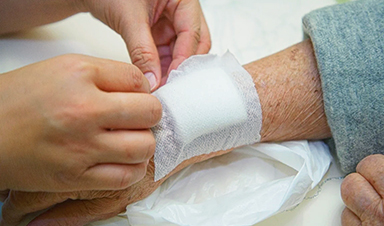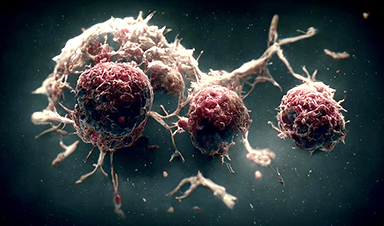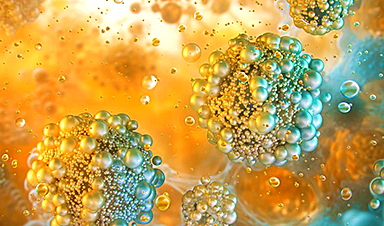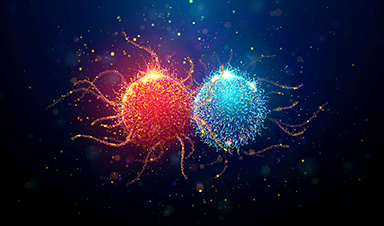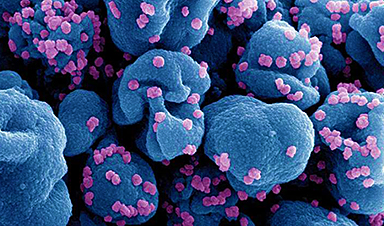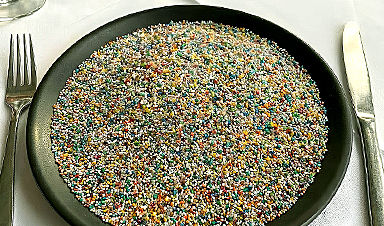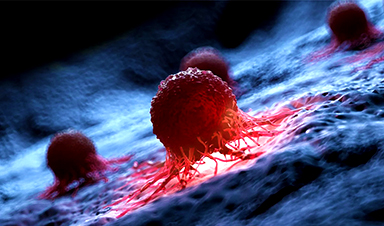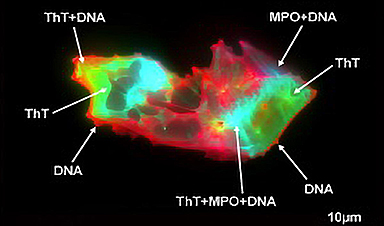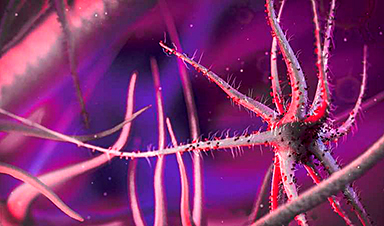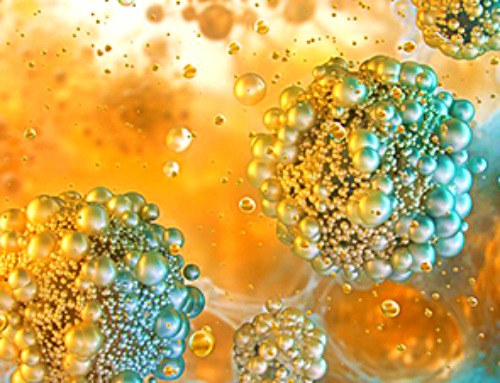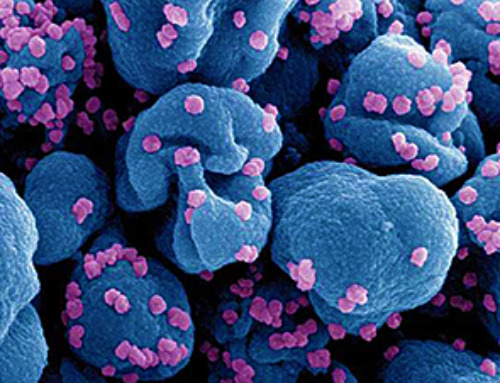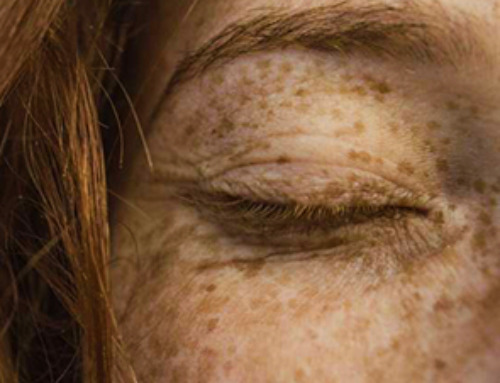Background
Wound healing is a complex physiological process that can be compromised by infection and impaired tissue regeneration. Conventional dressings, typically made from natural fibers such as cotton or linen, offer limited functionality. Nanofiber scaffolds, particularly those based on biocompatible polymers like PLA, provide high surface area and porosity, making them suitable for controlled drug delivery and tissue interaction.
Curcumin, a bioactive compound derived from turmeric, has demonstrated anti-inflammatory and antibacterial properties. However, its use in wound care is limited by poor solubility and low bioavailability. CNTs offer complementary advantages: they possess intrinsic antibacterial activity and can improve the mechanical properties and drug release profiles of polymer-based systems.
This study investigates the integration of CNTs into PLA-curcumin nanofibers to create a multifunctional wound dressing capable of both structural support and infection control.
The Current Study
The dressing was produced using electrospinning, a technique suitable for fabricating nanofibers with controlled morphology. PLA (molecular weight: 203,000 g/mol) was dissolved in dichloromethane, followed by the addition of curcumin to ensure uniform dispersion. CNTs were incorporated at varying concentrations to assess their effects on the material’s structural and functional properties.
Electrospun nanofibers were collected using a standard setup with a controlled flow rate and fixed needle-to-collector distance. Characterization included Fourier-transform infrared spectroscopy (FTIR) for chemical analysis and scanning electron microscopy (SEM) for morphology. Tensile tests evaluated mechanical strength, while curcumin release profiles were analyzed through in vitro assays. Antibacterial performance was assessed using standard strains of Staphylococcus aureus and Escherichia coli.
Results and Discussion
Incorporating CNTs significantly improved the mechanical strength and thermal stability of the PLA-curcumin nanofibers. Tensile testing showed that even small additions of CNTs enhanced tensile strength compared to pure PLA. Drug release studies confirmed a controlled and sustained release of curcumin, with the rate modulated by CNT concentration. This effect was attributed to changes in scaffold porosity and microstructure.
Antibacterial assays revealed that CNT-containing composites had a marked inhibitory effect on bacterial growth. The PLA-Cur-0.05 % CNT formulation showed the highest antibacterial activity, with a 78.95 % reduction in microbial growth. While curcumin alone showed limited antibacterial efficacy in the PLA matrix, CNTs appeared to support both dispersion and membrane-disruptive mechanisms, contributing to improved outcomes.
Water absorption tests further supported the composite’s suitability for wound care. While PLA alone exhibited high water uptake, the addition of curcumin and CNTs reduced this absorption. A more moderate water uptake profile is advantageous for managing exudates without compromising the mechanical integrity of the dressing.
Conclusion
This study demonstrates the potential of CNT-enhanced PLA-curcumin nanofiber mats as multifunctional wound dressings. The combination of improved mechanical properties, antibacterial activity, and controlled drug release offers a promising platform for infection management and wound healing support. The design leverages nanostructure engineering to overcome the limitations of conventional materials and drug delivery systems.
Future research should explore in vivo performance, scalability, and further refinement of the composite formulation. Optimizing component ratios and evaluating long-term biocompatibility will be key steps toward clinical application.
Journal Reference
Faal M., et al. (2025). Fabrication and evaluation of polylactic acid-curcumin containing carbon nanotubes (CNTs) wound dressing using electrospinning method with experimental and computational approaches. Scientific Reports. DOI: 10.1038/s41598-025-98393-2, https://www.nature.com/articles/s41598-025-98393-2
News
Scientists Melt Cancer’s Hidden “Power Hubs” and Stop Tumor Growth
Researchers discovered that in a rare kidney cancer, RNA builds droplet-like hubs that act as growth control centers inside tumor cells. By engineering a molecular switch to dissolve these hubs, they were able to halt cancer [...]
Platelet-inspired nanoparticles could improve treatment of inflammatory diseases
Scientists have developed platelet-inspired nanoparticles that deliver anti-inflammatory drugs directly to brain-computer interface implants, doubling their effectiveness. Scientists have found a way to improve the performance of brain-computer interface (BCI) electrodes by delivering anti-inflammatory drugs directly [...]
After 150 years, a new chapter in cancer therapy is finally beginning
For decades, researchers have been looking for ways to destroy cancer cells in a targeted manner without further weakening the body. But for many patients whose immune system is severely impaired by chemotherapy or radiation, [...]
Older chemical libraries show promise for fighting resistant strains of COVID-19 virus
SARS‑CoV‑2, the virus that causes COVID-19, continues to mutate, with some newer strains becoming less responsive to current antiviral treatments like Paxlovid. Now, University of California San Diego scientists and an international team of [...]
Lower doses of immunotherapy for skin cancer give better results, study suggests
According to a new study, lower doses of approved immunotherapy for malignant melanoma can give better results against tumors, while reducing side effects. This is reported by researchers at Karolinska Institutet in the Journal of the National [...]
Researchers highlight five pathways through which microplastics can harm the brain
Microplastics could be fueling neurodegenerative diseases like Alzheimer's and Parkinson's, with a new study highlighting five ways microplastics can trigger inflammation and damage in the brain. More than 57 million people live with dementia, [...]
Tiny Metal Nanodots Obliterate Cancer Cells While Largely Sparing Healthy Tissue
Scientists have developed tiny metal-oxide particles that push cancer cells past their stress limits while sparing healthy tissue. An international team led by RMIT University has developed tiny particles called nanodots, crafted from a metallic compound, [...]
Gold Nanoclusters Could Supercharge Quantum Computers
Researchers found that gold “super atoms” can behave like the atoms in top-tier quantum systems—only far easier to scale. These tiny clusters can be customized at the molecular level, offering a powerful, tunable foundation [...]
A single shot of HPV vaccine may be enough to fight cervical cancer, study finds
WASHINGTON -- A single HPV vaccination appears just as effective as two doses at preventing the viral infection that causes cervical cancer, researchers reported Wednesday. HPV, or human papillomavirus, is very common and spread [...]
New technique overcomes technological barrier in 3D brain imaging
Scientists at the Swiss Light Source SLS have succeeded in mapping a piece of brain tissue in 3D at unprecedented resolution using X-rays, non-destructively. The breakthrough overcomes a long-standing technological barrier that had limited [...]
Scientists Uncover Hidden Blood Pattern in Long COVID
Researchers found persistent microclot and NET structures in Long COVID blood that may explain long-lasting symptoms. Researchers examining Long COVID have identified a structural connection between circulating microclots and neutrophil extracellular traps (NETs). The [...]
This Cellular Trick Helps Cancer Spread, but Could Also Stop It
Groups of normal cbiells can sense far into their surroundings, helping explain cancer cell migration. Understanding this ability could lead to new ways to limit tumor spread. The tale of the princess and the [...]
New mRNA therapy targets drug-resistant pneumonia
Bacteria that multiply on surfaces are a major headache in health care when they gain a foothold on, for example, implants or in catheters. Researchers at Chalmers University of Technology in Sweden have found [...]
Current Heart Health Guidelines Are Failing To Catch a Deadly Genetic Killer
New research reveals that standard screening misses most people with a common inherited cholesterol disorder. A Mayo Clinic study reports that current genetic screening guidelines overlook most people who have familial hypercholesterolemia, an inherited disorder that [...]
Scientists Identify the Evolutionary “Purpose” of Consciousness
Summary: Researchers at Ruhr University Bochum explore why consciousness evolved and why different species developed it in distinct ways. By comparing humans with birds, they show that complex awareness may arise through different neural architectures yet [...]
Novel mRNA therapy curbs antibiotic-resistant infections in preclinical lung models
Researchers at the Icahn School of Medicine at Mount Sinai and collaborators have reported early success with a novel mRNA-based therapy designed to combat antibiotic-resistant bacteria. The findings, published in Nature Biotechnology, show that in [...]
